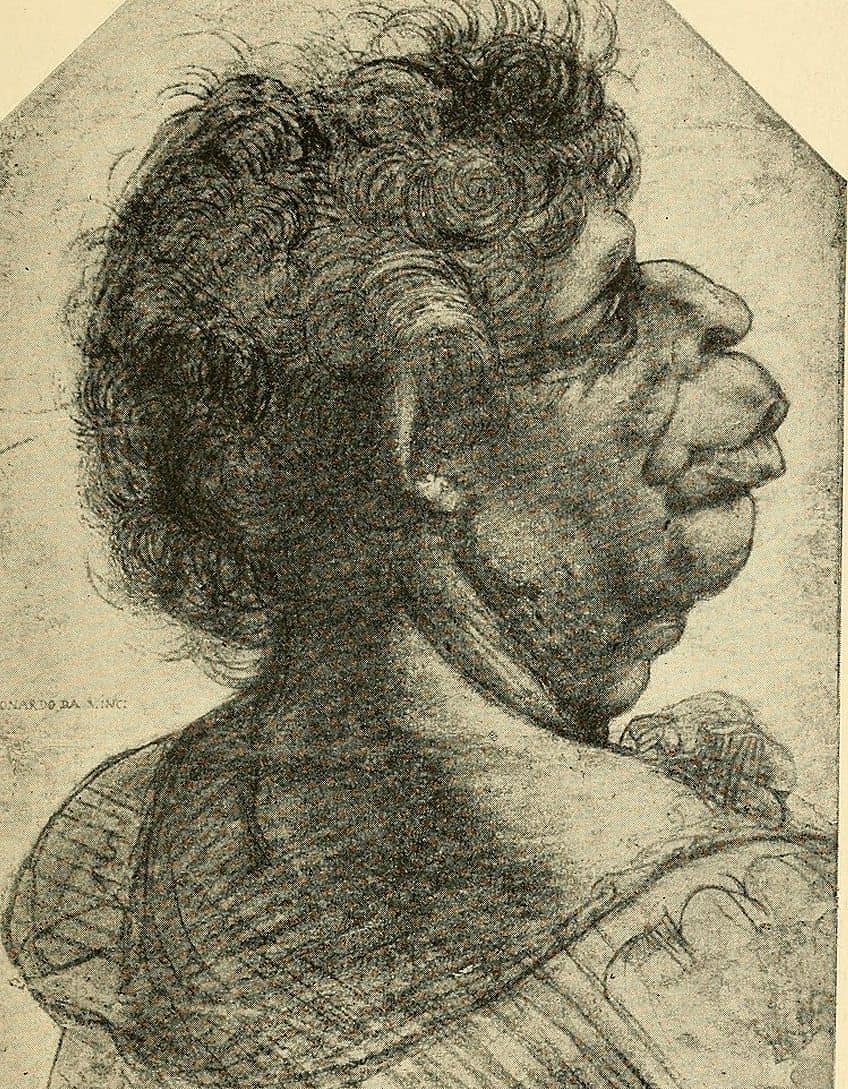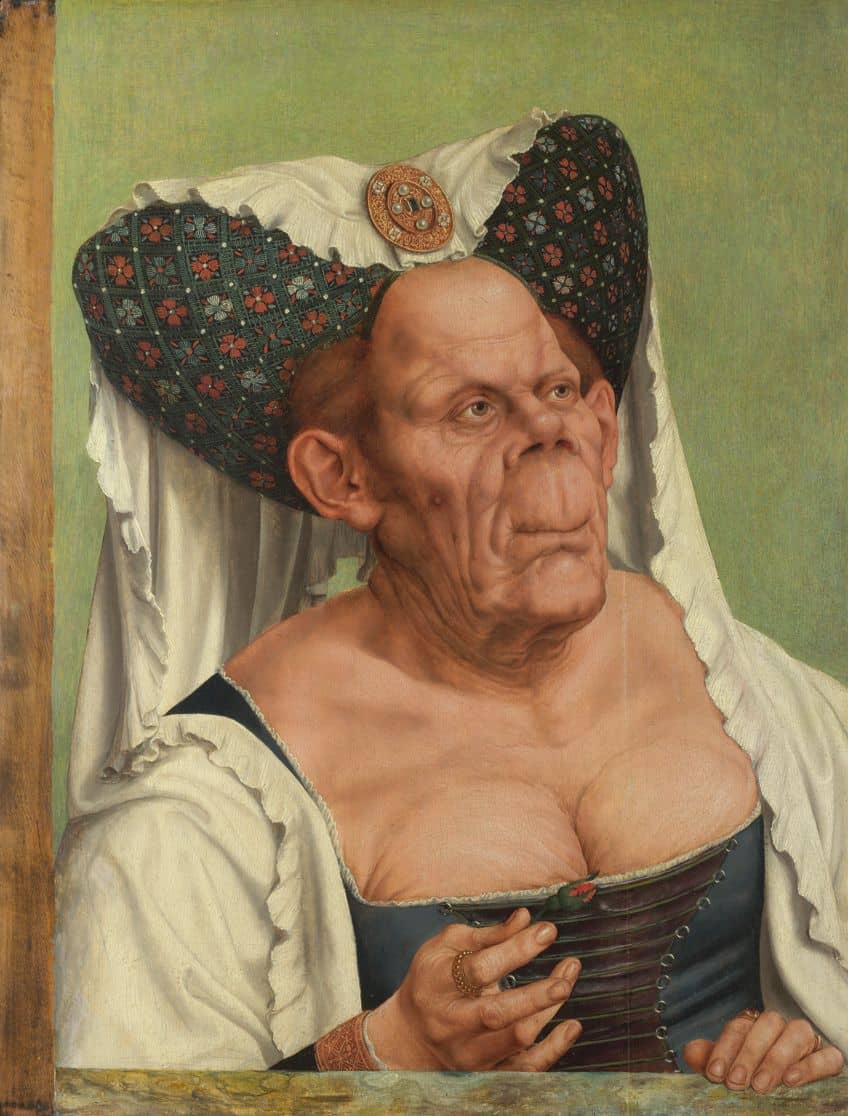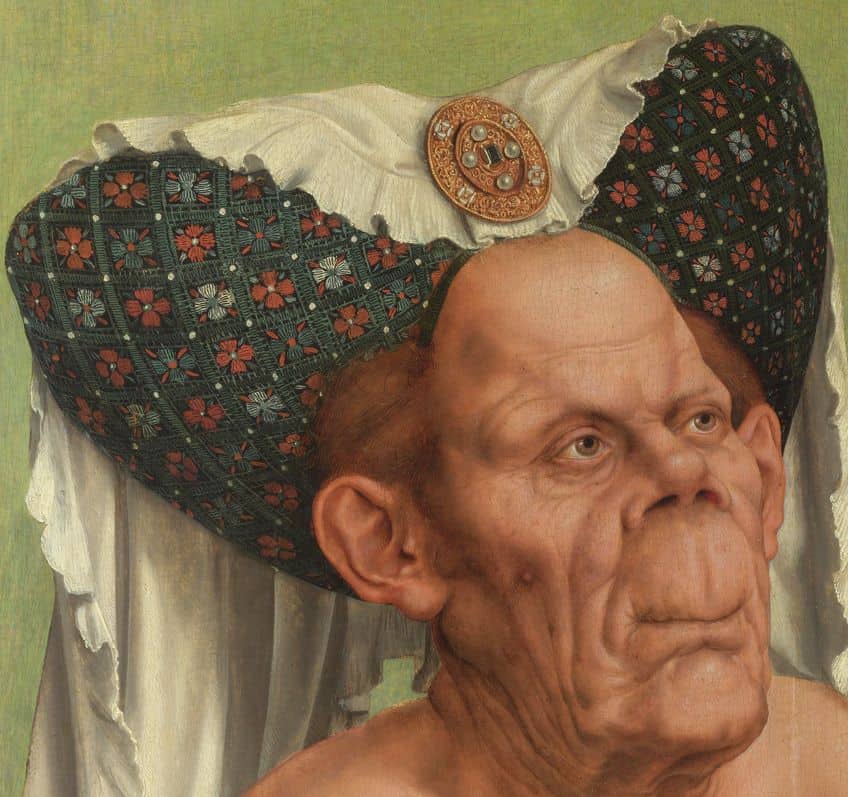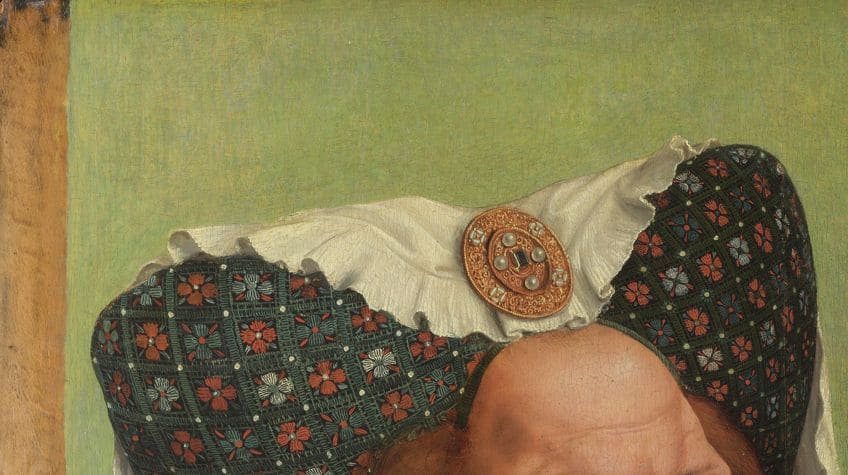“The Ugly Duchess” by Quinten Massys – An In-Depth Analysis
What is ugly and what is not? This question underlies the striking and bold The Ugly Duchess by Quinten Massys, a painting of an old woman with a contrasting set of features and fashion sense not quite fitting for the standards of the time. This article will discuss the Duchess painting in more detail.
Table of Contents
Artist Abstract: Who Was Quinten Massys?
Quinten or Quentin Massys (whose surname is also sometimes spelled Matsys or Metsys) was a Flemish artist; his birth years are dated for 1466 to 1530 and he was believed to have been born in the city of Leuven in Belgium and died in Antwerp, Belgium. There are no extensive details about his early life or exact date of birth, but he has been known as one of the significant artists from the Antwerp School as well became a member of the Guild of Saint Luke, reportedly in 1491. His art style included portrait and genre paintings, including religious subject matter, with possible influence from both the Northern and Italian Renaissance art styles. Some of his paintings include The Money Changer and His Wife (1514), The Crucifixion (c. 1515), and Ill-Matched Lovers (c. 1520-1525).

The Ugly Duchess (c. 1513) by Quinten Massys in Context
In the article below we will discuss The Ugly Duchess analysis, which was painted by Quinten Massys. Before we look at the subject matter and the artist’s style in a formal analysis, we will provide a brief contextual analysis of the social and historical aspects and what inspired this unique depiction of an old woman.
| Artist | Quinten Massys (1466 – 1530) |
| Date Painted | c. 1513 |
| Medium | Oil on oak |
| Genre | Portrait painting |
| Period / Movement | Northern Renaissance |
| Dimensions (cm) | 62.4 x 45.5 |
| Series / Versions | Consists of two paintings; the other painting is Portrait of an Old Man (c.1517), which is housed at the Musée Jacquemart-André in Paris, France. |
| Where Is It Housed? | The National Gallery, London, United Kingdom |
| What It Is Worth | Uncertain |
Contextual Analysis: A Brief Socio-Historical Overview
The Ugly Duchess by Quinten Massys has been widely attributed to two dominant sources of possible inspiration, namely In Praise of Folly (1511) by the Dutch Desiderius Erasmus, which was an essay satirizing the burgeoning cultural landscape during the Renaissance period, which had three important drivers moving society, namely Protestant Reformation, the Catholic Church, as well as the Humanist ideologies.
The essay is written from the viewpoint of a woman named “Folly” who talks about a variety of subjects like religion, marriage, and various types of relationships, among many other human traits and endeavors, however, it does so in a ridiculing manner pointing to various ideas of falsity and pretense in society.

The Ugly Duchess by Quinten Massys has often been seen as a satirical visual portrayal of an old woman who is trying to appear young and beautiful as is evident by her clothing and somewhat exposed breasts, including the rosebud in her hand, which reportedly symbolizes romantic pursuit and being courted.
Another widely held theory points to similar drawings that were done by Leonardo da Vinci who created various so-called “grotesque heads”, specifically one of a woman who resembles Massys’ old duchess painting. However, the consensus points to the two artist’s friendship with one another and that Massys could have shown Da Vinci some of his drawings.
According to The National Gallery, The Ugly Duchess was painted by Quinten Massys due to his underdrawings as preparation for the painting.
Formal Analysis: A Brief Compositional Overview
The Ugly Duchess painting depicts ideas of the grotesque, which we will expand upon in a visual description below. This will also cover a discussion around the artist’s stylistic applications according to the following art elements, color, texture, line, shape, form, and space with a mention of how the principles of art “organize” the elements.

Subject Matter: Visual Description
The Ugly Duchess by Quinten Massys is a portrait painting of an old woman gazing at an unknown source to her left (our right), almost in a semi-profile view. She appears to be looking out of a frame, which is described as a parapet, and the background is a solid light green color.
Her left hand is slightly resting on the lower part of it; she is holding a small red rosebud between her thumb and index finger while the back of her left is also partially leaning against the lower part of the parapet.

She is dressed in what is believed to be 15th-century fashion, with a dark blue corset and a floral-decorated headdress, which is known as an Escoffion and is described as having a “double horn” shape. There is a white piece of fabric attached with a round bejeweled brooch to the middle of the headdress. This fabric falls over her shoulders and behind her back.
Her large forehead is open revealing parts of her thin brown hair on either side of her head. She has wrinkled skin, and her upper chest area is exposed, her corset also reveals part of her breasts that are wrinkled.
Color
Quinten Massys utilized a limited color palette for example blue, white, green, brown, and skin tones of the old woman. There are also smaller patches of color like reds and gold on the old woman’s headdress and jewelry.
There are also subtle areas of darker hues or shading comprising her skin tone, which provides more three-dimensionality and depth of her skin tone. Overall, the color scheme appears harmonious as there are no stark color contrasts. Furthermore, the softer green of the background creates a gentle emphasis on the woman in the foreground and eliminates any unnecessary details.

Texture
If you zoom in on The Ugly Duchess by Quinten Massys, you will notice the variety of textures created from the brushwork. These brushstrokes also imply different textures, for example, the smoother brushstrokes for the skin tones, the long, thin, and curly brushstrokes denoting the strands of hair, the finer arabesque-like brushstrokes that create the decoration of the golden brooch, and the dots of paint that imply the reflections on the brooch’s pearls as well as the old woman’s ring.
Massys also reportedly utilized the technique called sgraffito, which consists of “scratching” an upper layer of paint that is still wet. This is reportedly seen on the cuff of the long sleeve of her right arm (our left).

Line
There is a variety of organic, or naturalistic, lines in The Ugly Duchess by Quinten Massys, for example, the variety of curved lines implying the old woman’s wrinkles on her face and neck, the two distinct semi-circular lines delineating the shape of her breasts, and the various folds and curvy, almost wavy, lines denoting the white fabric falling over her shoulders.

Shape and Form
The shapes and form of The Ugly Duchess by Quinten Massys are also organic, and naturalistic, with a dominance of rounded shapes that compose the old woman’s figure, for example, the defined circular shapes of her semi-exposed breasts in her corset, the elongated ovular form of her face and forehead, and the rounding of her shoulders, as well as the cone-like shapes of her headdress.
There is a slight and subtle contrast created by the semi-straight shape of the white cloth as it hangs beside both sides of her face, seemingly echoed by the vertical left side of the rectangular shape of the parapet that she appears to stand behind, the latter also creates more of a geometric contrast with the more curvilinear form.

Space
The compositional space in The Ugly Duchess by Quinten Massys is composed of the old woman in the foreground and the neutral and solid-colored background, which provided more emphasis and focus on the main subject matter.

Beauty Is in the Eye of the Beholder
This article explored The Ugly Duchess analysis, which is an oil painting by Quinten Massys. It depicts an old woman who becomes the embodiment of, quite literally, what is ugly and is often described as “grotesque”. There are several theories around the meaning of this portrayal by Massys and most notably that it is a satirical play on ideas of beauty, youth, old age, and vanity.
There is also a male version titled Portrait of an Old Man (c.1517), which depicts a profile view of an elderly man with somewhat exaggerated features. Massys’ old woman may also have inspired the illustration, done by John Tenniel, of the Duchess in the famous novel Alice in Wonderland (1865) by Lewis Carroll.

Whether or not “The Ugly Duchess” by Quinten Massys was meant to depict what is ugly and grotesque, or merely just an old woman with a debilitating disease, it nonetheless points to how humanity has defined what is acceptable and what is not, and that beauty can be found almost anywhere if you are open to it.
Frequently Asked Questions
Who Created The Ugly Duchess Painting?
The Flemish painter Quinten Massys painted The Ugly Duchess (c. 1513), which is an oil on oak depicting an old woman with exaggerated deformities, believed to be because of Paget’s disease.
Where Is The Ugly Duchess Painting?
The Ugly Duchess (c. 1513) by Quinten Massys is housed at the National Gallery art museum in London, England. It was donated by Miss Jenny Louisa Roberta Blaker in 1947.
Who Is the Woman in The Ugly Duchess Painting?
The Ugly Duchess (c. 1513) painting by Quinten Massys is believed to depict the Countess of Tyrol, whose name was Margaret Maultasch. She was believed to also have Paget’s disease, which is a bone deformity disease and could have contributed to her appearance, but she was also reportedly dead for over a century when this was painted.
Alicia du Plessis is a multidisciplinary writer. She completed her Bachelor of Arts degree, majoring in Art History and Classical Civilization, as well as two Honors, namely, in Art History and Education and Development, at the University of KwaZulu-Natal, South Africa. For her main Honors project in Art History, she explored perceptions of the San Bushmen’s identity and the concept of the “Other”. She has also looked at the use of photography in art and how it has been used to portray people’s lives.
Alicia’s other areas of interest in Art History include the process of writing about Art History and how to analyze paintings. Some of her favorite art movements include Impressionism and German Expressionism. She is yet to complete her Masters in Art History (she would like to do this abroad in Europe) having given it some time to first develop more professional experience with the interest to one day lecture it too.
Alicia has been working for artincontext.com since 2021 as an author and art history expert. She has specialized in painting analysis and is covering most of our painting analysis.
Learn more about Alicia du Plessis and the Art in Context Team.
Cite this Article
Alicia, du Plessis, ““The Ugly Duchess” by Quinten Massys – An In-Depth Analysis.” Art in Context. February 17, 2023. URL: https://artincontext.org/the-ugly-duchess-by-quinten-massys/
du Plessis, A. (2023, 17 February). “The Ugly Duchess” by Quinten Massys – An In-Depth Analysis. Art in Context. https://artincontext.org/the-ugly-duchess-by-quinten-massys/
du Plessis, Alicia. ““The Ugly Duchess” by Quinten Massys – An In-Depth Analysis.” Art in Context, February 17, 2023. https://artincontext.org/the-ugly-duchess-by-quinten-massys/.











